Francis Tyers
Curriculum optimization for low-resource speech recognition
Feb 17, 2022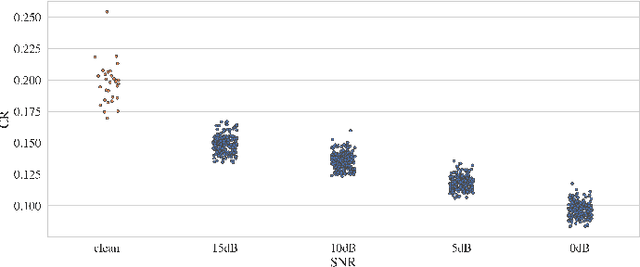


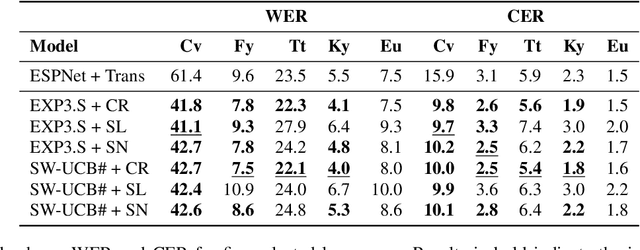
Abstract:Modern end-to-end speech recognition models show astonishing results in transcribing audio signals into written text. However, conventional data feeding pipelines may be sub-optimal for low-resource speech recognition, which still remains a challenging task. We propose an automated curriculum learning approach to optimize the sequence of training examples based on both the progress of the model while training and prior knowledge about the difficulty of the training examples. We introduce a new difficulty measure called compression ratio that can be used as a scoring function for raw audio in various noise conditions. The proposed method improves speech recognition Word Error Rate performance by up to 33% relative over the baseline system
Evaluating Multiway Multilingual NMT in the Turkic Languages
Sep 13, 2021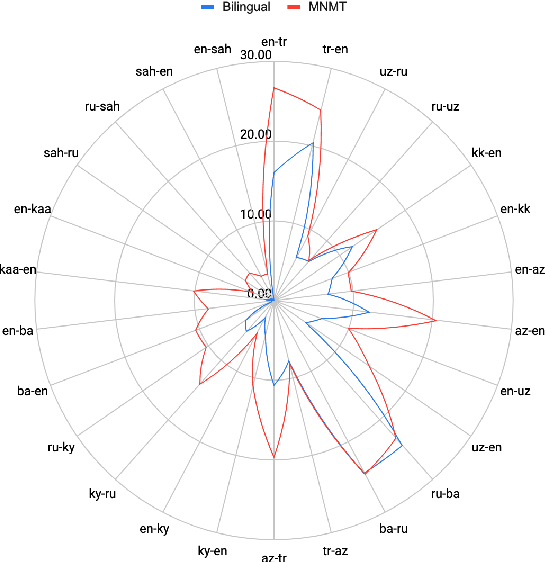
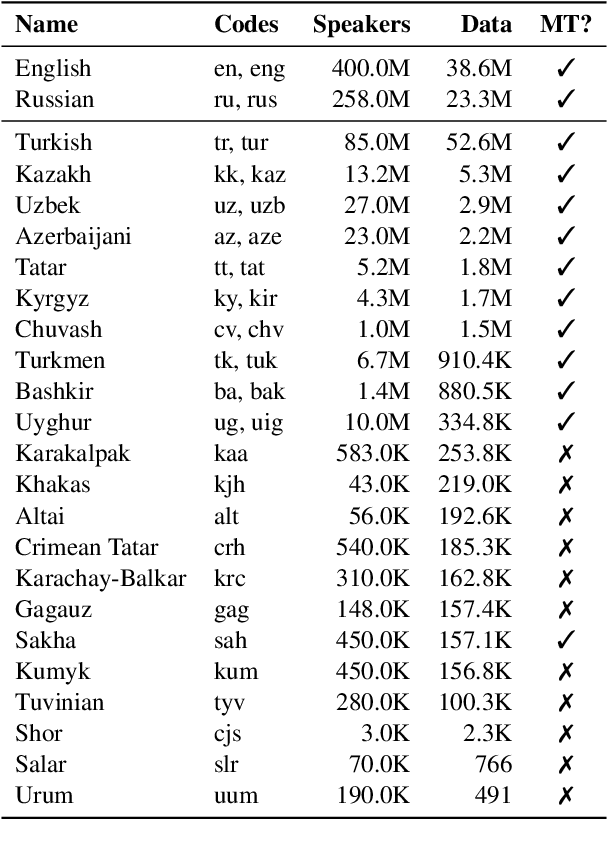
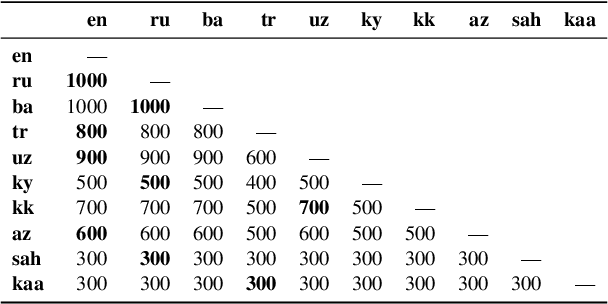
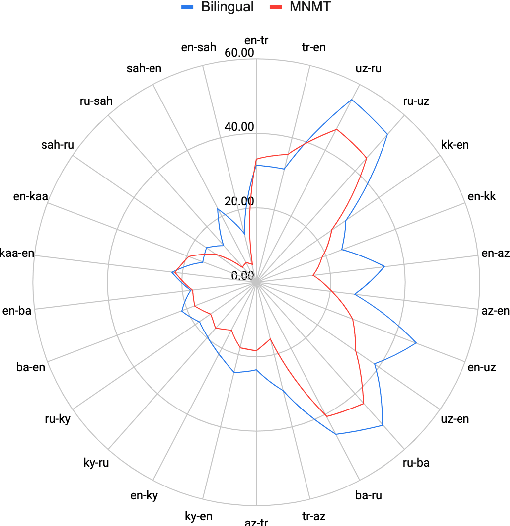
Abstract:Despite the increasing number of large and comprehensive machine translation (MT) systems, evaluation of these methods in various languages has been restrained by the lack of high-quality parallel corpora as well as engagement with the people that speak these languages. In this study, we present an evaluation of state-of-the-art approaches to training and evaluating MT systems in 22 languages from the Turkic language family, most of which being extremely under-explored. First, we adopt the TIL Corpus with a few key improvements to the training and the evaluation sets. Then, we train 26 bilingual baselines as well as a multi-way neural MT (MNMT) model using the corpus and perform an extensive analysis using automatic metrics as well as human evaluations. We find that the MNMT model outperforms almost all bilingual baselines in the out-of-domain test sets and finetuning the model on a downstream task of a single pair also results in a huge performance boost in both low- and high-resource scenarios. Our attentive analysis of evaluation criteria for MT models in Turkic languages also points to the necessity for further research in this direction. We release the corpus splits, test sets as well as models to the public.
A Large-Scale Study of Machine Translation in the Turkic Languages
Sep 09, 2021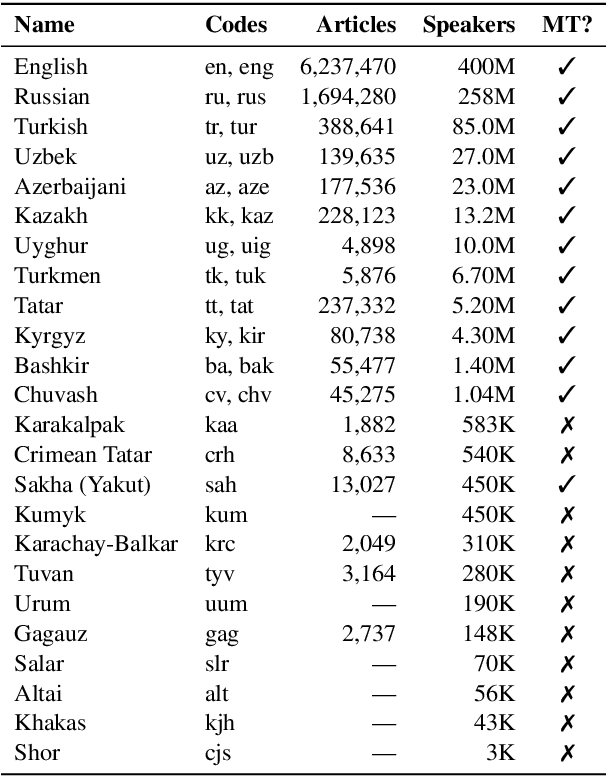
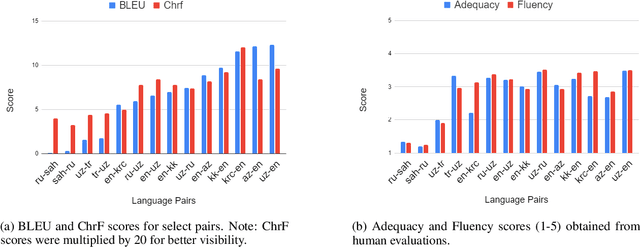
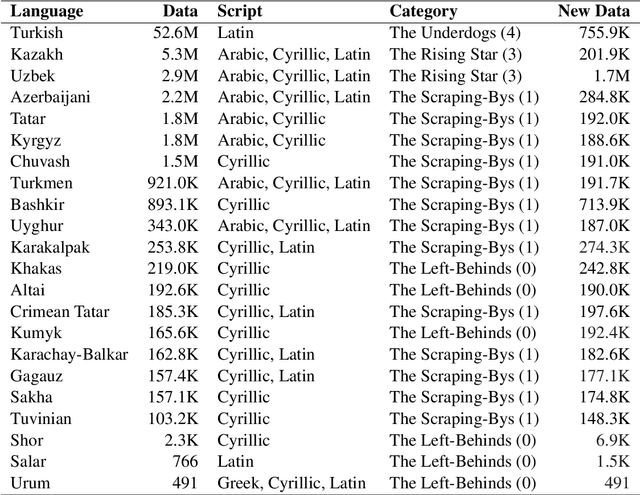
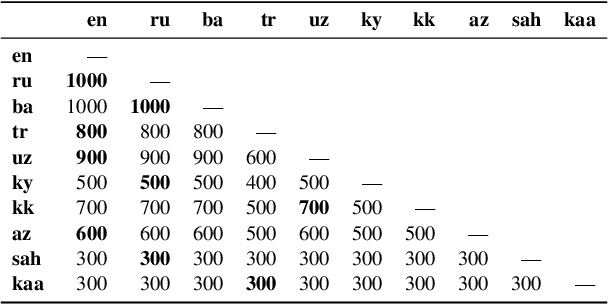
Abstract:Recent advances in neural machine translation (NMT) have pushed the quality of machine translation systems to the point where they are becoming widely adopted to build competitive systems. However, there is still a large number of languages that are yet to reap the benefits of NMT. In this paper, we provide the first large-scale case study of the practical application of MT in the Turkic language family in order to realize the gains of NMT for Turkic languages under high-resource to extremely low-resource scenarios. In addition to presenting an extensive analysis that identifies the bottlenecks towards building competitive systems to ameliorate data scarcity, our study has several key contributions, including, i) a large parallel corpus covering 22 Turkic languages consisting of common public datasets in combination with new datasets of approximately 2 million parallel sentences, ii) bilingual baselines for 26 language pairs, iii) novel high-quality test sets in three different translation domains and iv) human evaluation scores. All models, scripts, and data will be released to the public.
Do RNN States Encode Abstract Phonological Processes?
Apr 01, 2021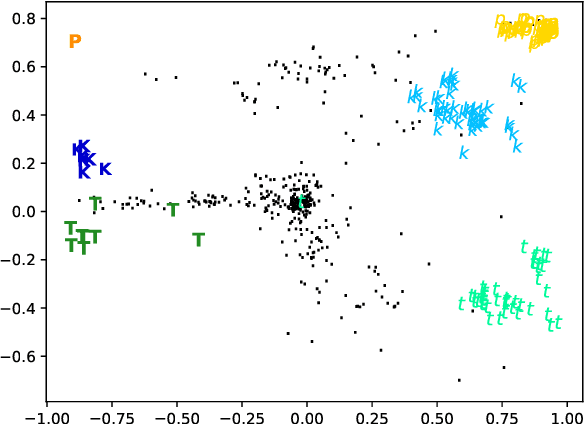
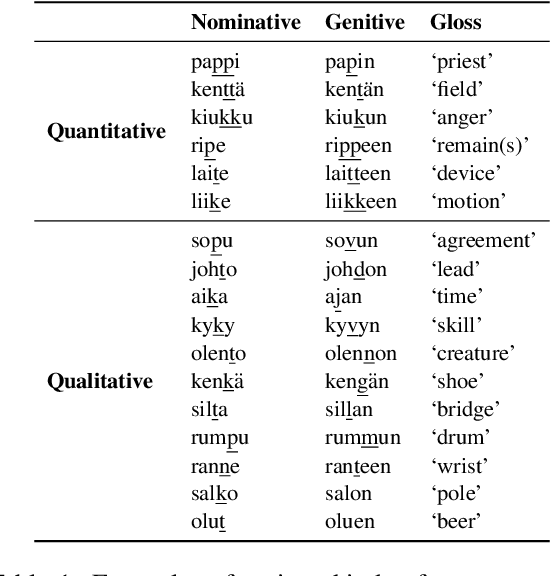
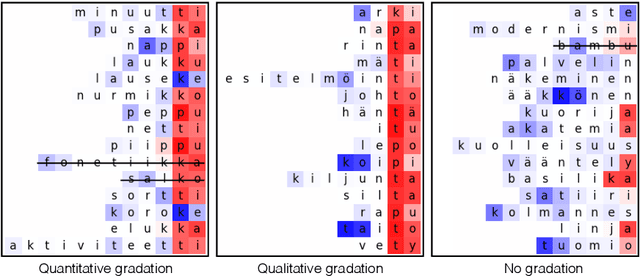
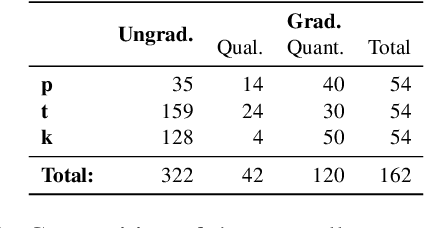
Abstract:Sequence-to-sequence models have delivered impressive results in word formation tasks such as morphological inflection, often learning to model subtle morphophonological details with limited training data. Despite the performance, the opacity of neural models makes it difficult to determine whether complex generalizations are learned, or whether a kind of separate rote memorization of each morphophonological process takes place. To investigate whether complex alternations are simply memorized or whether there is some level of generalization across related sound changes in a sequence-to-sequence model, we perform several experiments on Finnish consonant gradation -- a complex set of sound changes triggered in some words by certain suffixes. We find that our models often -- though not always -- encode 17 different consonant gradation processes in a handful of dimensions in the RNN. We also show that by scaling the activations in these dimensions we can control whether consonant gradation occurs and the direction of the gradation.
SIGMORPHON 2020 Shared Task 0: Typologically Diverse Morphological Inflection
Jul 14, 2020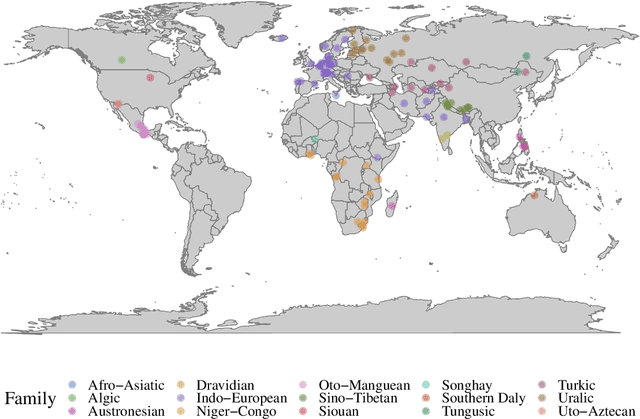
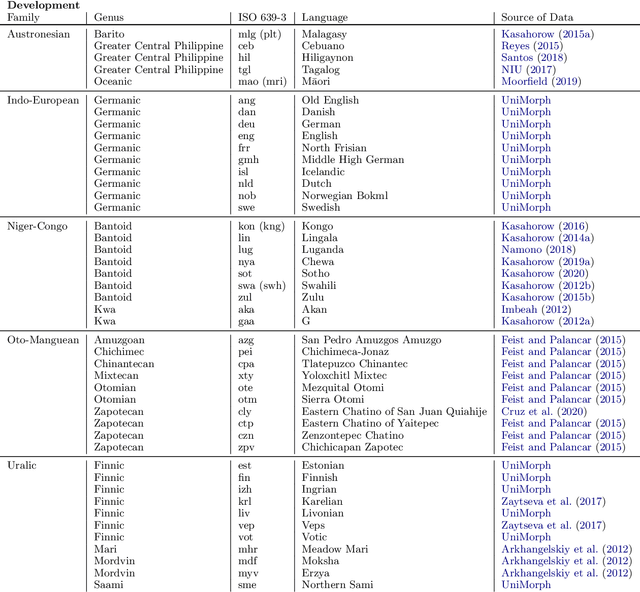
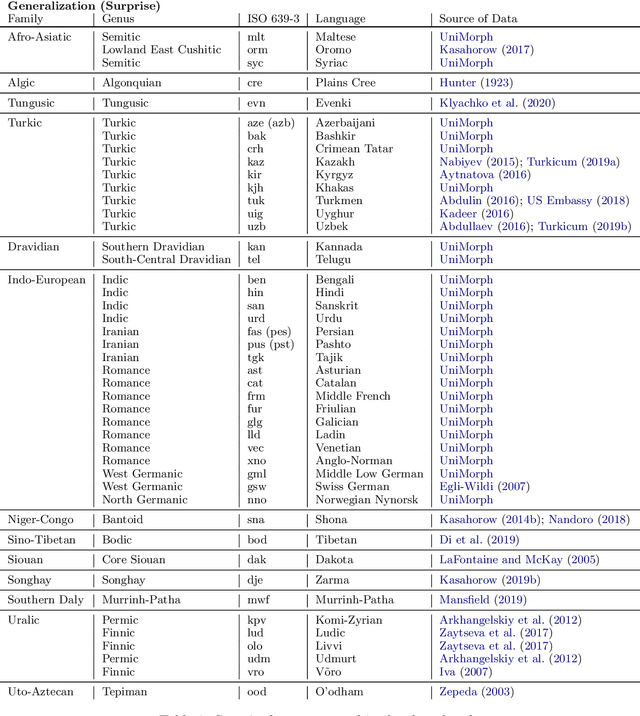
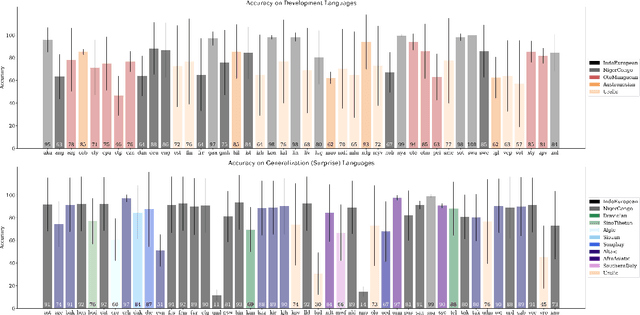
Abstract:A broad goal in natural language processing (NLP) is to develop a system that has the capacity to process any natural language. Most systems, however, are developed using data from just one language such as English. The SIGMORPHON 2020 shared task on morphological reinflection aims to investigate systems' ability to generalize across typologically distinct languages, many of which are low resource. Systems were developed using data from 45 languages and just 5 language families, fine-tuned with data from an additional 45 languages and 10 language families (13 in total), and evaluated on all 90 languages. A total of 22 systems (19 neural) from 10 teams were submitted to the task. All four winning systems were neural (two monolingual transformers and two massively multilingual RNN-based models with gated attention). Most teams demonstrate utility of data hallucination and augmentation, ensembles, and multilingual training for low-resource languages. Non-neural learners and manually designed grammars showed competitive and even superior performance on some languages (such as Ingrian, Tajik, Tagalog, Zarma, Lingala), especially with very limited data. Some language families (Afro-Asiatic, Niger-Congo, Turkic) were relatively easy for most systems and achieved over 90% mean accuracy while others were more challenging.
Neural Polysynthetic Language Modelling
May 13, 2020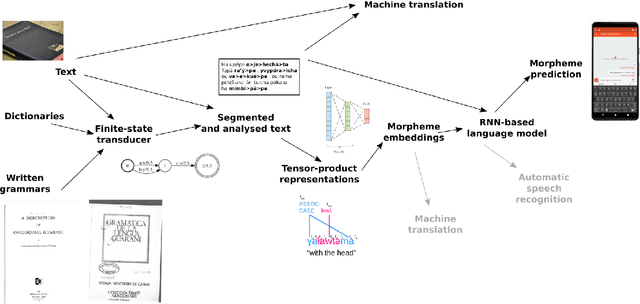
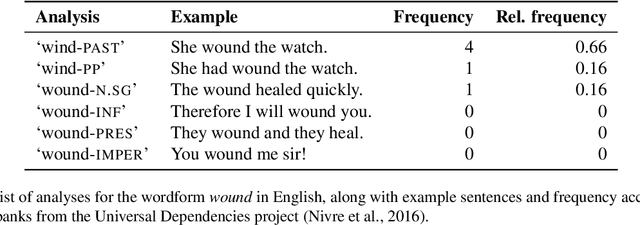

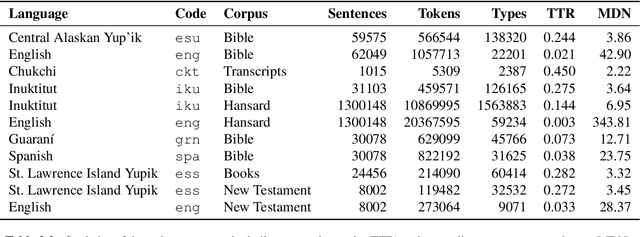
Abstract:Research in natural language processing commonly assumes that approaches that work well for English and and other widely-used languages are "language agnostic". In high-resource languages, especially those that are analytic, a common approach is to treat morphologically-distinct variants of a common root as completely independent word types. This assumes, that there are limited morphological inflections per root, and that the majority will appear in a large enough corpus, so that the model can adequately learn statistics about each form. Approaches like stemming, lemmatization, or subword segmentation are often used when either of those assumptions do not hold, particularly in the case of synthetic languages like Spanish or Russian that have more inflection than English. In the literature, languages like Finnish or Turkish are held up as extreme examples of complexity that challenge common modelling assumptions. Yet, when considering all of the world's languages, Finnish and Turkish are closer to the average case. When we consider polysynthetic languages (those at the extreme of morphological complexity), approaches like stemming, lemmatization, or subword modelling may not suffice. These languages have very high numbers of hapax legomena, showing the need for appropriate morphological handling of words, without which it is not possible for a model to capture enough word statistics. We examine the current state-of-the-art in language modelling, machine translation, and text prediction for four polysynthetic languages: Guaran\'i, St. Lawrence Island Yupik, Central Alaskan Yupik, and Inuktitut. We then propose a novel framework for language modelling that combines knowledge representations from finite-state morphological analyzers with Tensor Product Representations in order to enable neural language models capable of handling the full range of typologically variant languages.
Universal Dependencies v2: An Evergrowing Multilingual Treebank Collection
Apr 22, 2020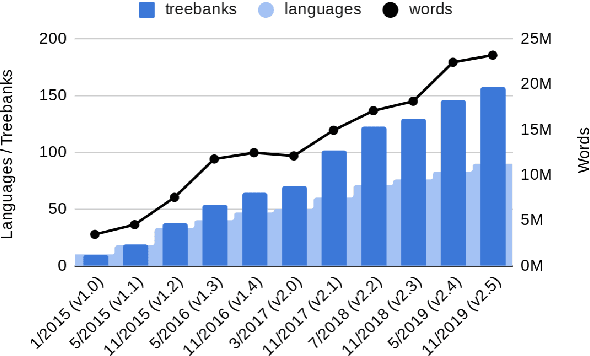
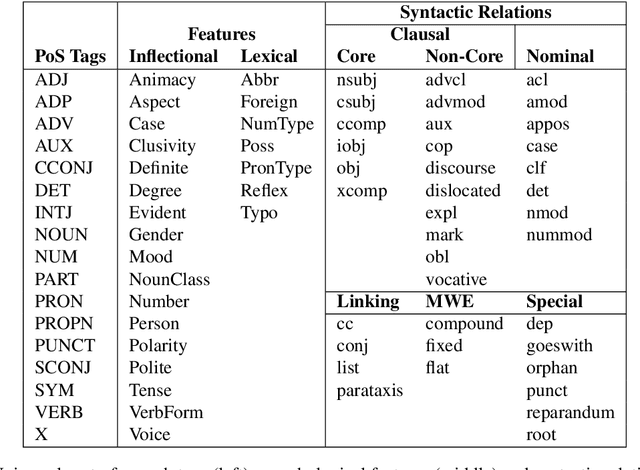


Abstract:Universal Dependencies is an open community effort to create cross-linguistically consistent treebank annotation for many languages within a dependency-based lexicalist framework. The annotation consists in a linguistically motivated word segmentation; a morphological layer comprising lemmas, universal part-of-speech tags, and standardized morphological features; and a syntactic layer focusing on syntactic relations between predicates, arguments and modifiers. In this paper, we describe version 2 of the guidelines (UD v2), discuss the major changes from UD v1 to UD v2, and give an overview of the currently available treebanks for 90 languages.
 Add to Chrome
Add to Chrome Add to Firefox
Add to Firefox Add to Edge
Add to Edge